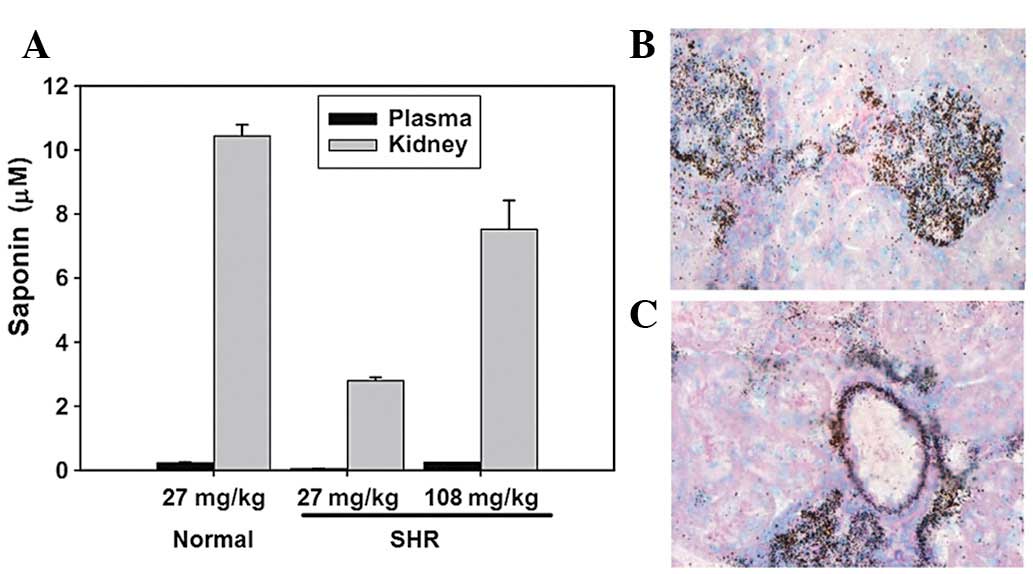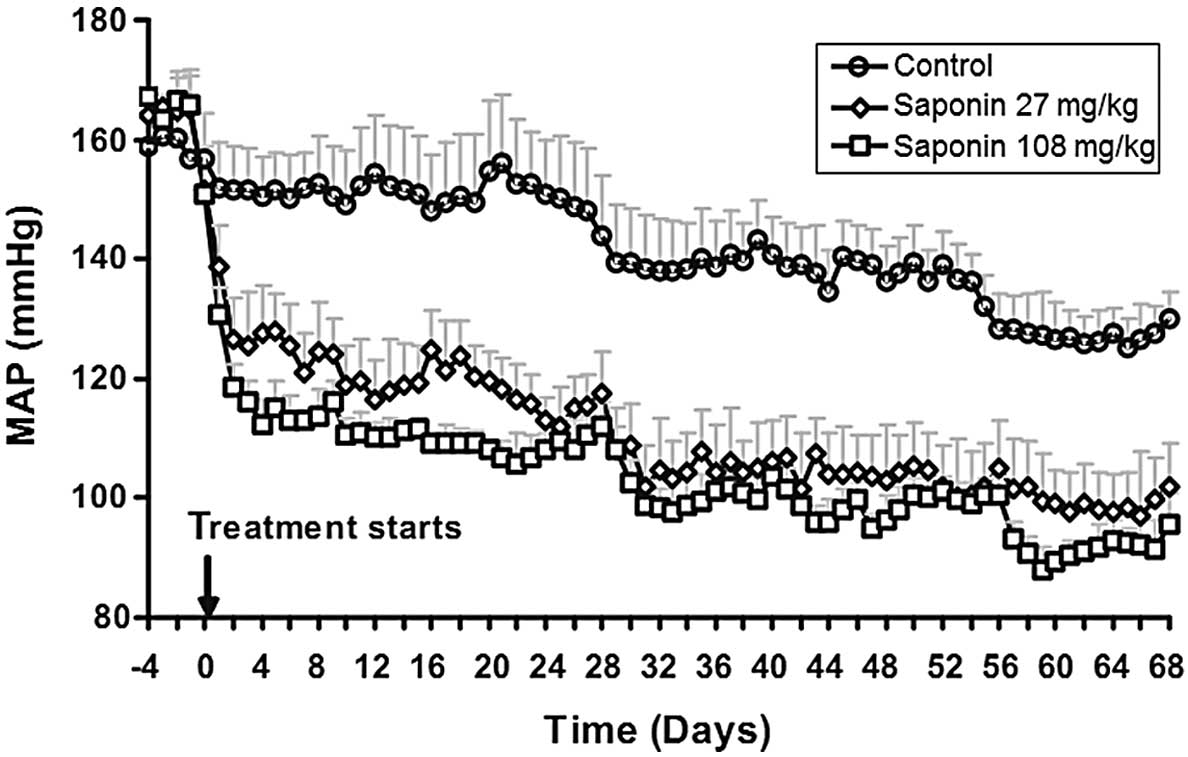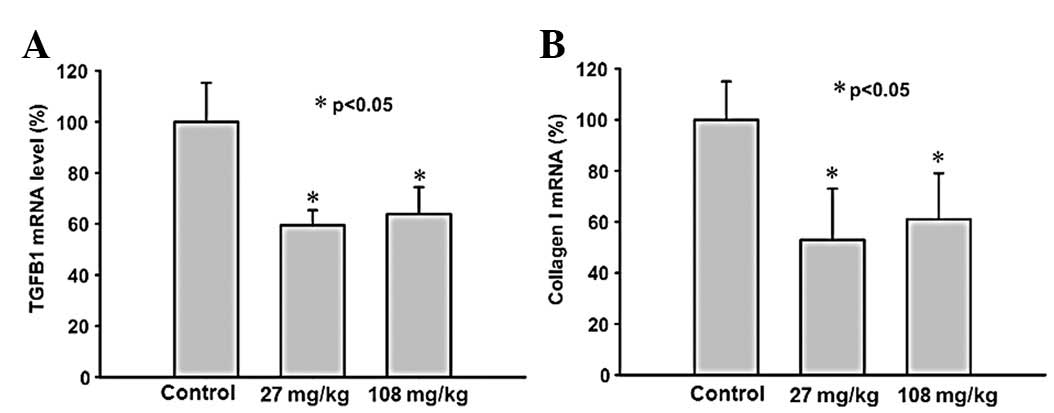Protective effects of saponin on a hypertension target organ in spontaneously hypertensive rats
- Authors:
- Published online on: December 11, 2012 https://doi.org/10.3892/etm.2012.856
- Pages: 429-432
Metrics:
Total
Views: 0 (Spandidos Publications: | PMC Statistics:
)
Total PDF Downloads: 0 (Spandidos Publications: | PMC Statistics:
)
Abstract
The present study was undertaken to investigate the protective effects of saponin on a hypertensive target organ (the kidney) in spontaneously hypertensive rats (SHRs) and also to explore the effect of saponin on the renin‑angiotensin‑aldosterone system (RAAS). A total of 24, 14‑week‑old SHRs were randomly divided into three groups; the first was administered low‑dose saponin, the second with high‑dose saponin and the third with a placebo as the control group. An additional eight healthy male Wistar rats were used as the normal group. The blood pressures (BPs) of the rats were determined using an animal BP‑6 non‑invasive blood pressure tester. Furthermore, the gene expression of TGFB1, collagen I and prorenin receptor (PRR) was determined by quantitative real time (qRT)‑PCR. The histopathological and morphological features of the tissue samples were assessed semi‑quantitatively. The content of saponin in the renal samples was lower in SHRs than in the normal healthy rats, but the plasma levels of saponin were similar. Mean arterial pressure (MAP) was reduced 5 days subsequent to saponin treatment by 36±3 and 51±4 mmHg in the low‑ and high‑dose saponin groups, respectively. The anti‑hypertensive effect of saponin was dose‑related during the first 4 weeks of treatment. The gene expression of TGFB1 and collagen I in the renal samples was significantly suppressed in the low‑ and high‑dose saponin groups compared with that in the control group. The gene expression of PRR was significantly and dose‑dependently increased in the saponin‑treated groups. These findings suggested that saponin reduced systemic BP and blocked the circulating and tissue RAAS.















